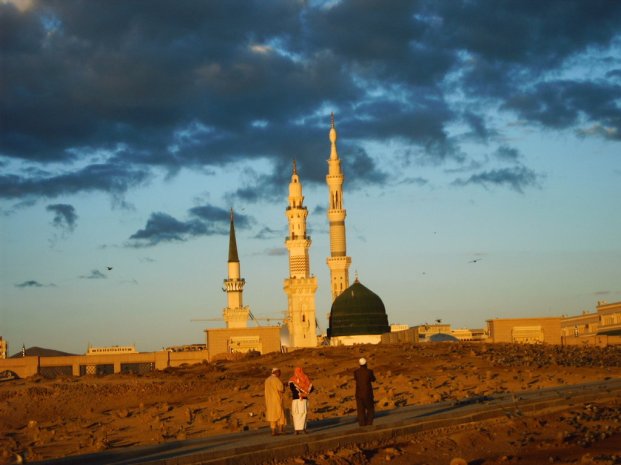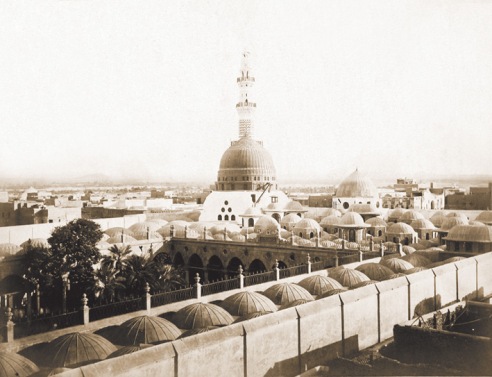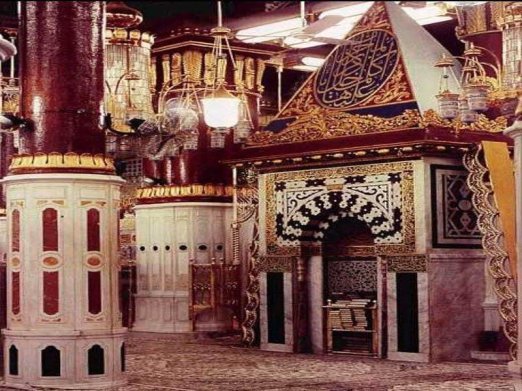MEDINA
City in saudi arabia, second to mecca as a holy site to muslims.
Located in Hijaz, about 100 miles from the Red Sea and 215 miles north of Mecca, Medina is revered by Muslims as the prophet Muhammad's destination after his emigration (hijra in Arabic) from Mecca in 622 c.e., and as the site of his tomb. Although it is not mandatory, many pilgrims to Mecca also visit Medina. The city became the southern terminus of the Ottomans' Hijaz Railway upon its completion in 1908. The site of a major Ottoman garrison during World War I, Medina and the rest of Hijaz came under Hashimite rule after the empire's defeat. The city's high walls were the last refuge of the Hashimites, and Medina was the last city in Hijaz to fall to the attacking forces of Abd al-Aziz ibn Abd alRahman Al Saʿud in 1926, after which many of the city's historical monuments and tombs were destroyed because the conservative religious allies of Abd al-Aziz found them offensive.
Relatively abundant water has enabled Medina to have an important agricultural hinterland, with dates the main crop. However, the growth of the city during the oil era and diversion of water to other uses has caused agriculture to suffer. The annual pilgrimage provides an important source of income, as do trade and the provision of services. Long a center of Islamic learning, the city now hosts the Islamic University of Medina. A 2000 estimate put the city's population at 891,000.
PICS OF MADINA




No comments:
Post a Comment